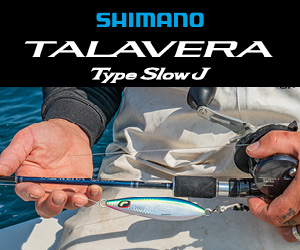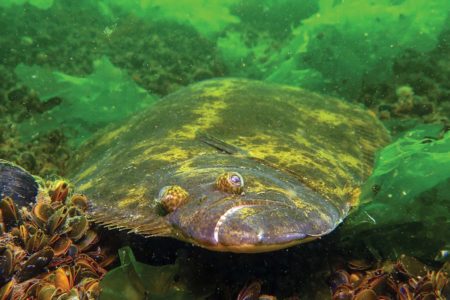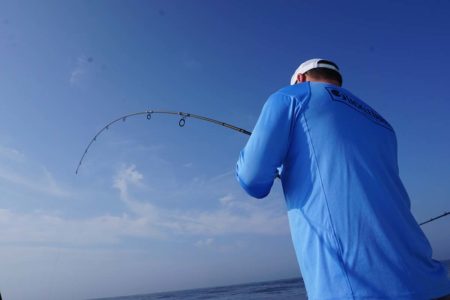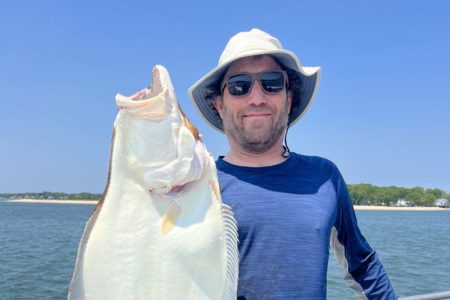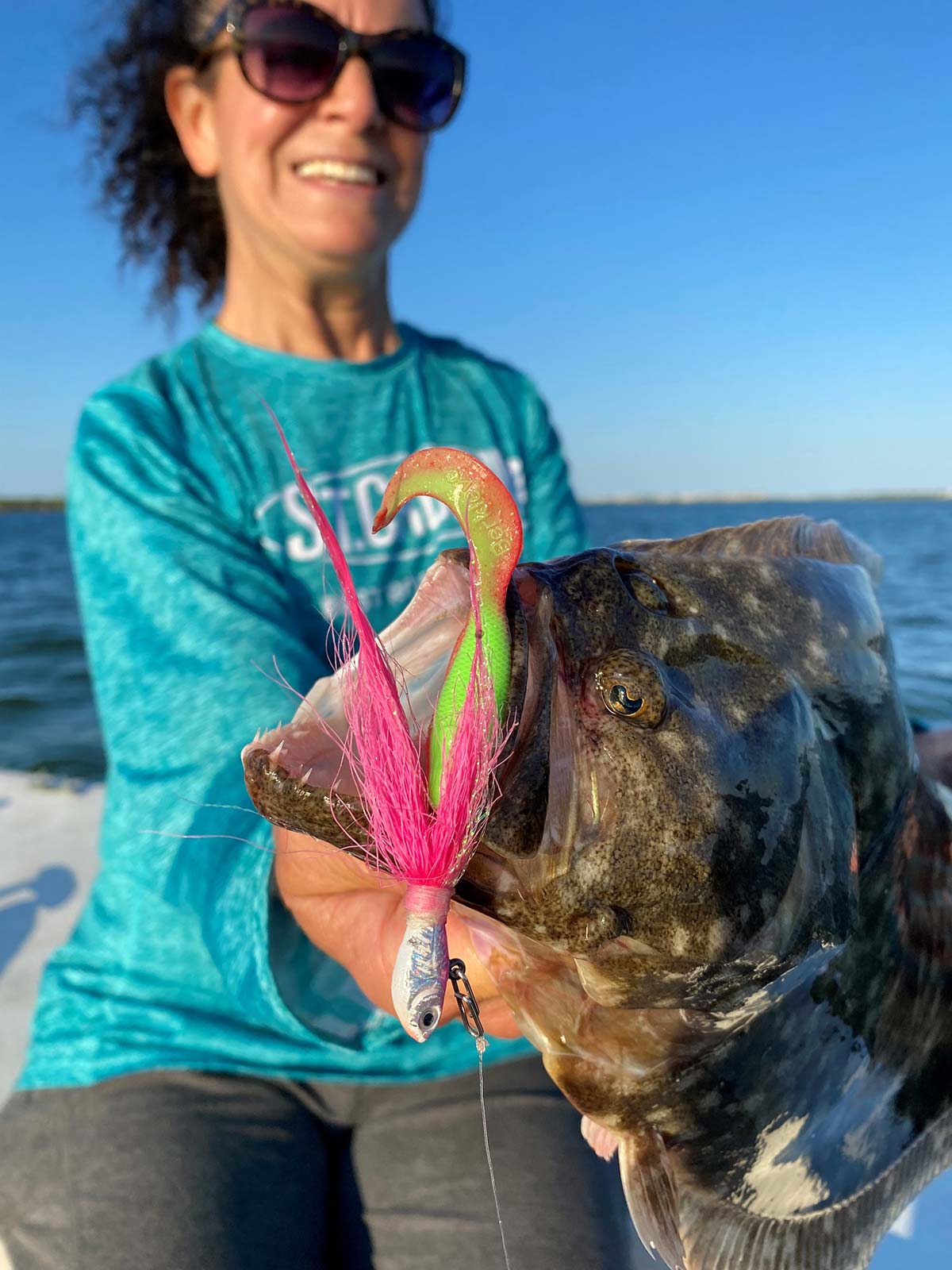
The special thrills of ultralight gear shouldn’t be overlooked.
The development of ultralight saltwater fishing has been both a revolution and a delight. Who would have imagined 60 years ago, when we dragged long leaders with squid, spearing, or sand eel on a hook with heavy sinkers for fluke, or plied the rocks for blackfish with cord and meat sticks, that in the first few decades of the 21st century we’d be fishing with freshwater gear for bottom dwellers and having a great time? Few folks, I think. Yet, technology has made it possible for millions of anglers.
Defining Ultralight
Well, I can offer our definition, but others might describe it differently. In short, we use tackle that I also use in freshwater for panfish such as bluegill, perch, and crappie. Specifically, 6 to 6-1/2-foot rods with light-medium to medium power and fast or extra fast tips. Matching reels include the Okuma Stratus 35 and 40 models, the Okuma Avenger 4000, and Daiwa LT 2500. The reels are spooled with 10-pound test braid; either Sufix performance or Daiwa J-Braid.
The terminal end of our tackle is equally light. We tie on 18-inch length of 10 or 15-pound test monofilament leader by connecting the leader to the running line with a tiny 35-pound test Spro Power Swivel. The leader prevents line twist and helps manage the landing of fish. Then we tie either a 1/8-ounce or 1/4-ounce leadhead jig directly to the leader using an improved clinch knot. We prefer Gotcha heads because they have strong forged hooks instead of the wire hooks common to most light leadheads. Feel free to use any color head you’d like, although we tend to use white or chartreuse heads most often. The jig is then threaded with a small piece of Gulp — any model will do. And lately we’ve been using 4-inch Swimming Mullet. The color of the Gulp doesn’t matter — we’ve had success with every color they offer.
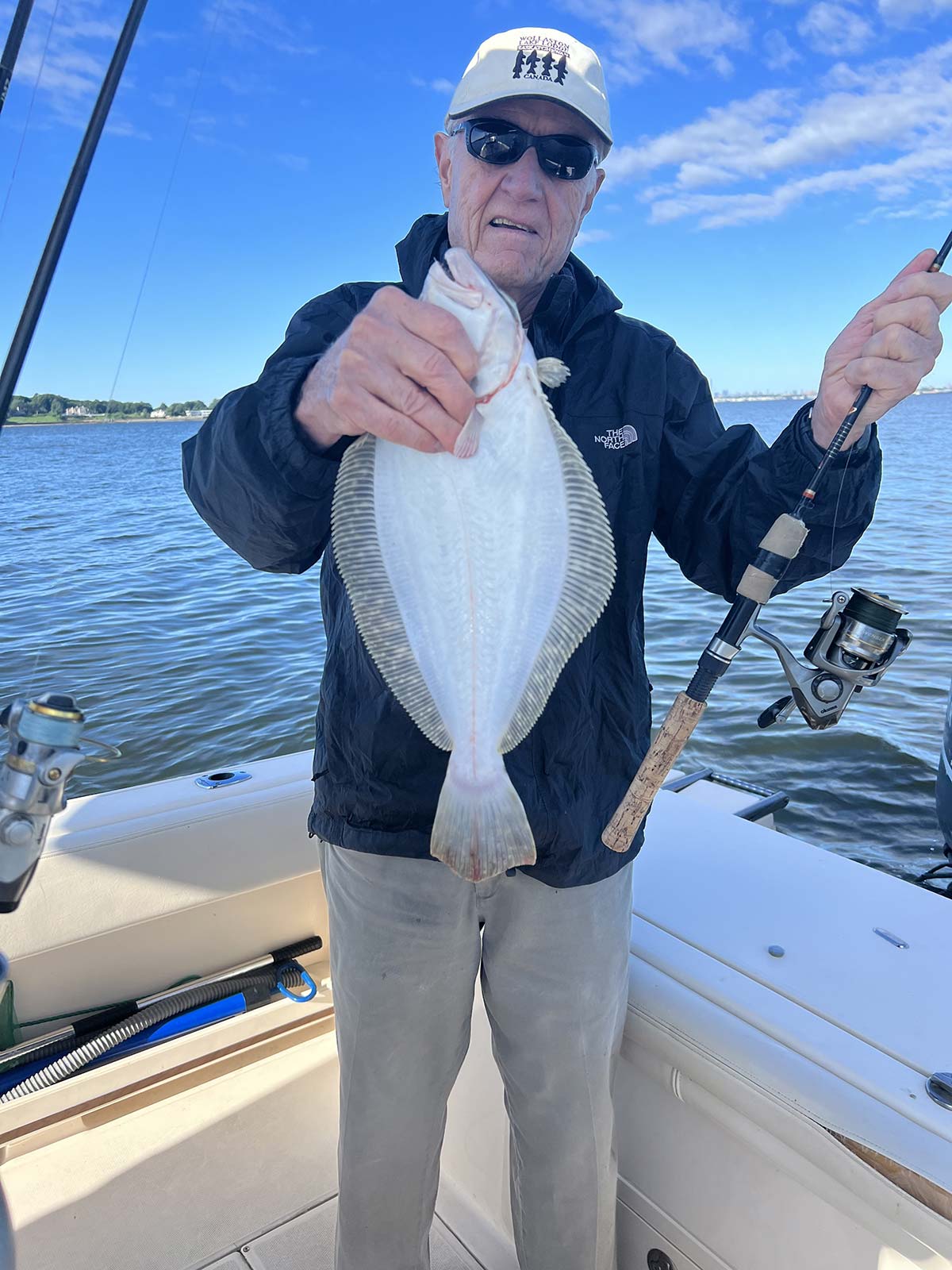
Required Conditions
Light tackle bottom fishing requires rather precise conditions to be effective. Deep water can be tough or if there are significant waves or boat wakes to deal with, or cross currents beneath the surface that you can’t see. Now, we’ve anchored and used this approach in 30 feet of water for porgies and blackfish with considerable success, but fluking is different because we need to drift for fluke, and drifting shines a new light on the technique. Fast drifts lift the heads, making it difficult to keep the jig on or near the bottom.
Look For Light Winds
The technique is easiest to execute and most successful with either calm or light breezy conditions — under 10 miles per hour. Second, consider the depth. The best depth is under 20 feet, and 8 to 12 feet is ideal. This depth seems to hold lots of bait; such as sand eels and peanut bunker, and is excellent for light tackle fishing. Strong currents should also be avoided because they make it difficult to keep the jig on bottom.
Suspended Bait
We fish open bottoms with sand or sand and small gravel mixed. Although doormats often hang around rugged rocky bottoms, landing one with ultralight gear becomes, shall we say, problematical. The last thing we look for is suspended bait. Is it possible to catch fluke without seeing bait on the depth recorder? Yes, of course, but the best action happens with lots of suspended bait near the bottom. It’s worth the time invested to cruise around in either known or probable fluke areas until either clouds or layers of bait are located. Fluke are aggressive predators, eat quite a bit all summer, and grow surprisingly quickly. Thus, they will behave very similar to stripers, blues, and weakfish when it comes to feeding, and will gather in large numbers around lots of bait.
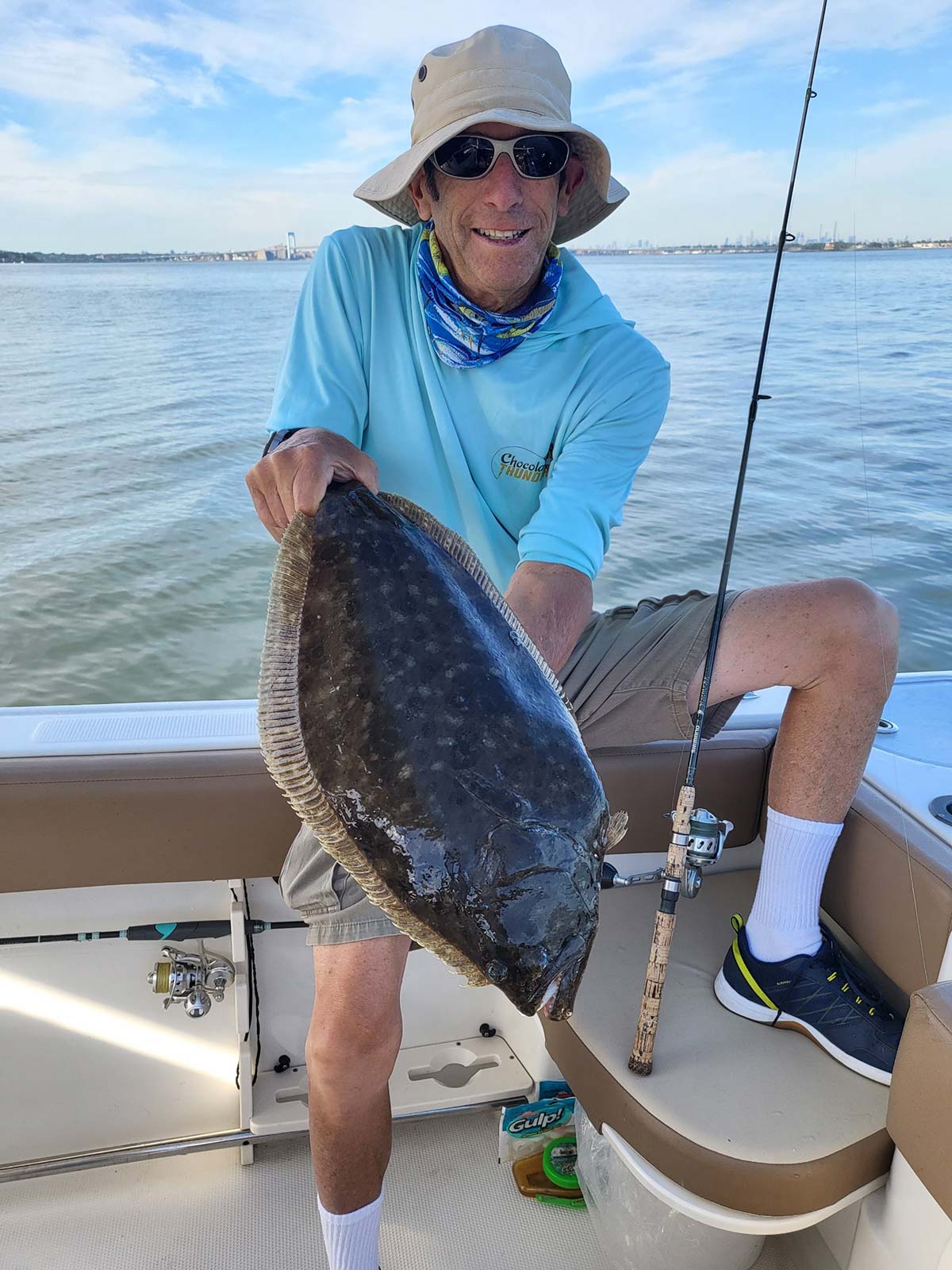
The Thump
Now to the biggie! The most important reason for using a net to land fluke is the fish’s behavior. Unlike winter flounder that pull hard to get deeper but never shake their heads, fluke just like stripers, blues, and weakfish will stop running and shake their heads as they try to dislodge the jig. Since they are flatfish, they don’t shake side to side, rather up and down, creating what feels like head thumping. Indeed, that’s exactly what it is. It turns out, that this is a more effective way to dislodge a hook than shaking side to side because when the fluke snaps its head up it creates instant slack. The larger the fluke, the greater the amount of slack.
| BETTER LANDING ODDS |
| Although some might think we lose more fish on ultralight tackle, the fact is we lose fewer fish because the equipment has so much flexibility that acts like a shock absorber against runs and doesn’t rip the hook out of lightly hooked fish. Light gear also provides much, much better feel, better presentations, and a better sense of when to set the hook. |
Other gamefish can create some slack with their head shakes, too, but are much less likely to throw the hook, as long as the angler keeps the rod bent. On the other hand, a sudden upward head snap, or perhaps multiple snaps, makes it more difficult to stay tight to the fish since the action instantly removes the bend in the rod. The problem is exacerbated at the surface because fluke use the surface of the water to beat against and, if they get their heads out of the water, can snap up more easily since the air is less dense than water. That’s why the most likely time to lose a fluke, especially a big one, will be during landing. That’s also why any good fluke angler will say, “don’t let them get their heads out of the water.”.
Art Of Landing
I know lots of anglers; be it in the surf or a boat, who simply can’t control the last moments of a battle with a fish. For example, one might try to drag a fish through a retreating surf and the combination of drag plus the pull of water often rips the hook out. I’ve also watched people chase fish in the wash while the fish remains hooked rather than using the rod, wash, and leader to secure the fish. Always stick to a proper calm landing method. In a boat I’ve watched anglers tighten down on an already tight drag in a revved-up attempt to land a big fish before it escapes, while others jab at a fish many times with a net and often knock it off the hook. The reality is, the opposite is true. The more you worry about landing a fish, the more likely you’ll become anxious, make a mistake, and the more likely the fish will escape. So, stay calm.
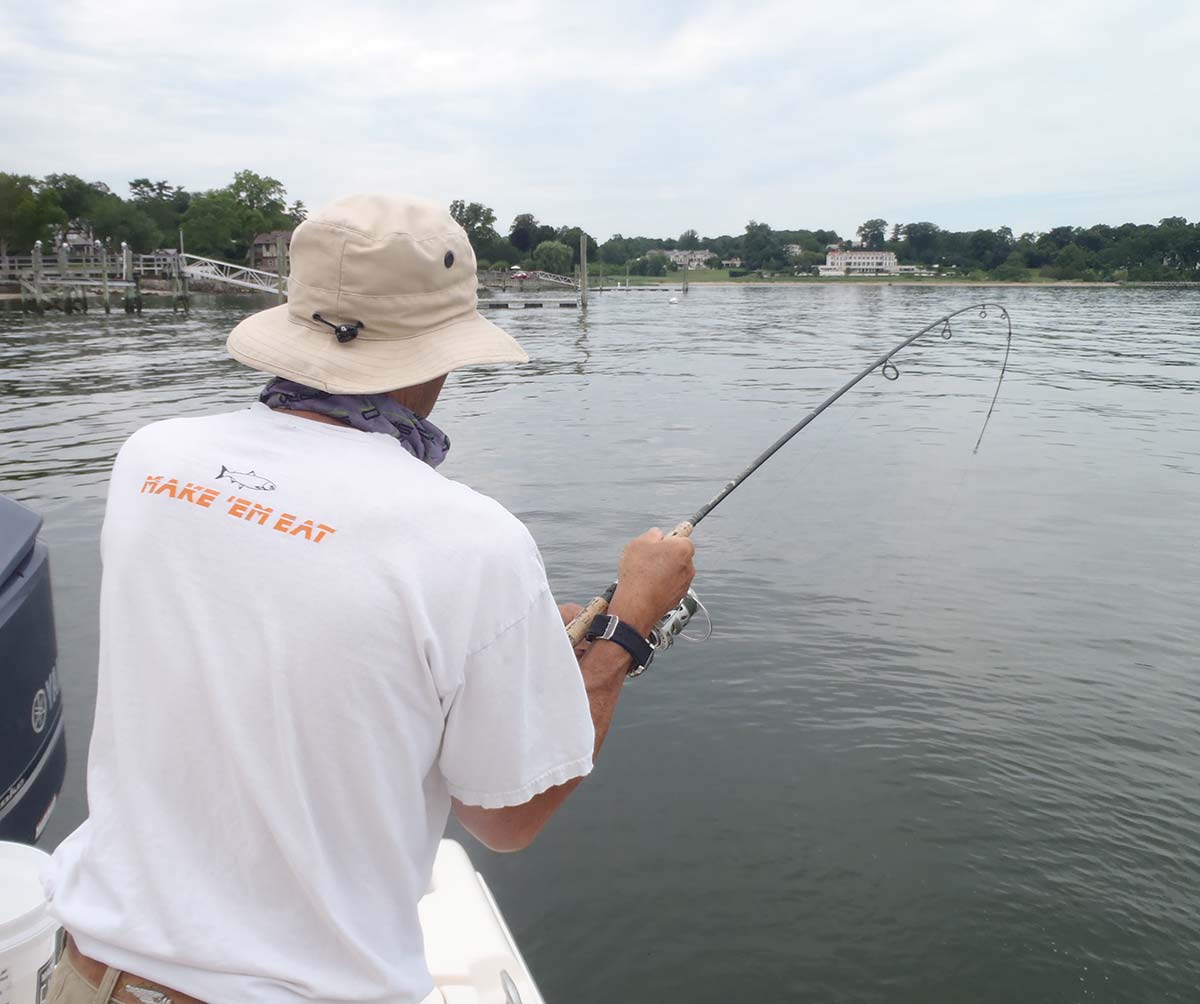
Steps To Netting
The next step is for the netter to position the net. Don’t wait until the last moment to do this because you also want to catch a fish. Instead, reel in, lay down your rod, pick up the net, and begin positioning it while the fish is still deep. Cooperative process, remember? The correct position is for the entire opening of the net to be under the surface of the water. Do not lunge at the fish when you see it, because that will accomplish two things. First, it will spook the fluke, usually sending it off on a hard run. Second, if it doesn’t spook, you could knock it off the hook. Here’s where your partner comes in.
| A NECESSITY FOR FLUKING |
| A landing net is needed when fishing for fluke, and becomes especially important with this approach. First, the light rods we use have a habit of breaking when an angler tries to swing a fish onboard. Second, the leader is light and with the wear and tear of fishing, can become weaker and break when boating even small fluke. Third, fluke have substantial teeth and if they attack your offering aggressively, they may engulf it beyond the leadhead. They sometimes bite off the jig, but most often they graze the leader and weaken it. Check your leader for damage after every fish. Retie if necessary. |
The angler needs to fight fluke cautiously but also keep a good bend in the rod. Keep the fluke about 2 feet under the water. Now, begin to move your rod in a circular pattern that pulls the fluke away from the net and then draws it closer, again and again. If a fluke isn’t ready to be netted it will dart down. Don’t fight this, rather keep a bend in the rod and let it dive. Be patient, because rushing the process usually results in disaster. The larger the fluke; especially with such light gear, the more important it is to be patient and wait for the right moment to land the fish.
Obviously, the reel’s drag should be set properly to permit a dive and also avoid ripping the hook out. Eventually, the fluke will settle down and you can guide it, head first, toward the submerged net opening. Do not move the net. When at least half the fish is in the net, the netter should simply lift the net up. The process is usually not needed on shorts, but practice it with every fish, and that will make landing the doormats easy and routine.
The Fun Part!
With all the basics and routine practices in place, it’s time to have fun with your light tackle technique. Although there are a variety of reasons why we go fishing, the main reason is to have fun. I wonder how many people would engage in any sport/hobby if it weren’t fun? The answer is obvious, they wouldn’t do it. So, we fish first and foremost to have fun, and it is important not to lose sight of that fact. Even those who also fish for the table would likely not participate if the process was pure drudgery. One of the reasons why so many anglers are using ultralight techniques for saltwater fish is because it’s so much fun. Even a barely sub-legal fluke puts up a fun fight on ultralight gear whereas it might simply glide to the boat with conventional gear.
All that said, many of these suggestions apply to fluke fishing regardless of the gear one uses, and therefore can be employed by all. However, the special thrills of ultralight gear shouldn’t be overlooked. I sure wish there was a fool-proof easy way to deal with the limitations of fast drifts, pulsing winds, deep water, and fast or conflicting currents. If there was, I’d ultralight for fluke every time out.
